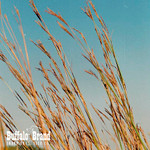Sold by the PLS pound
Botanical Name: Andropogon gerardii
Cultivars: Goldmine, Kaw, Pawnee, Native
Big Bluestem will grow almost anywhere, under any conditions. Root systems that can extend up to 12 feet into the ground, give the plant its extraordinary capacity to withstand drought and extremes of temperatures. Growth begins in early April and some plants may reach a height of eight or nine feet before the growing season ends. The majority of growth of Big Bluestem occurs after June 1st, which is the same approximate date that the growth of cool-season grasses slows down. By having 30 to 40 percent of available pasture planted in Big Bluestem or the other warm-season grasses, the producer can increase his total grazing operation by the same amount.
- Big Bluestem provides excellent yield, dependable forages, and very low maintenance.
- It can be used for all types of foraging livestock
- Big Bluestem provides choice wildlife cover and habitat.
- Soil fertility is increased by Big Bluestem, as moisture is retained and root systems hold developing mulch, thus increasing organic matter in the soil.
- Big Bluestem is excellent for erosion control.
- Big Bluestem is acid tolerant.
- Big Bluestem is attractive in spring, summer and fall.
VARIETIES
Goldmine produces forage with moderately improved in vitro dry matter digestibility (IVDMD), protein concentration, and improved forage yields in some hay management systems and improved animal gains in comparison to its parent cultivar, Kaw, when utilized by beef cattle in well-managed grazing systems. adapted to lower USDA plant Hardiness Zone 5 and Plant Hardiness Zone 6 of the Central Plains and Midwest, USA.
Kaw is a variety that has shown superior leafiness and vigor. It was developed from Kansas plants; therefore it thrives when raised under similar conditions. It is considered to be more disease resistant than native Big Bluestem. Pawnee was developed in Nebraska. Plants grow waist high or more, with deep green leaves and tall seed stalks. This variety is very hardy, with maximum growth in mid-summer and maturity reached in late summer.
Pawnee Typical of big bluestem of the central prairies. Originates from Pawnee County, Nebraska. This is a late maturing cultivar recommended for use from central Nebraska south through Oklahoma. Produces good forage yields in Nebraska; superior to native strains originating farther north and west. Improved seed yields and seed quality. Recommended in plant hardiness zones 5-6.
Native is a good quality, high yielding, highly palatable, long-lived grass. Few prairie grasses can equal the quality or quantity of forage produced by native Big Bluestem. Lacking only some of the special qualities that have been developed into the other varieties, Native Big Bluestem is truly a champion among grasses. Native Big Bluestem provides excellent wildlife habitat, and due to its sod-forming ability, is prized for erosion control.
Growing & Maintenance Tips
Proper ground preparation is one of the most important considerations when native grasses are being established. The seed bed should be firm, but not solid. Cultivation to kill the roots of cool-season grasses is essential. Planting can be done by either drilling or broadcasting, and the seed should be covered with no more than ¼ inch of soil. Avoid planting the seed too deep. Test the soil for deficiencies, and apply needed phosphorus, potassium, or lime prior to seeding. No additional fertilization is required after the stand has been established. Once your stand is well established, regulate the grazing patterns to avoid over-grazing. Much consideration should be given to controlled grazing toward the end of the growing season; grass grazed too closely weakens the root structure which provides a storage system for food reserves. Without these reserves of food the plant will die or be extremely stressed, thereby delaying or diminishing the spring “green up”.
Interesting Notes
Sometimes called the “King” of native grasses













